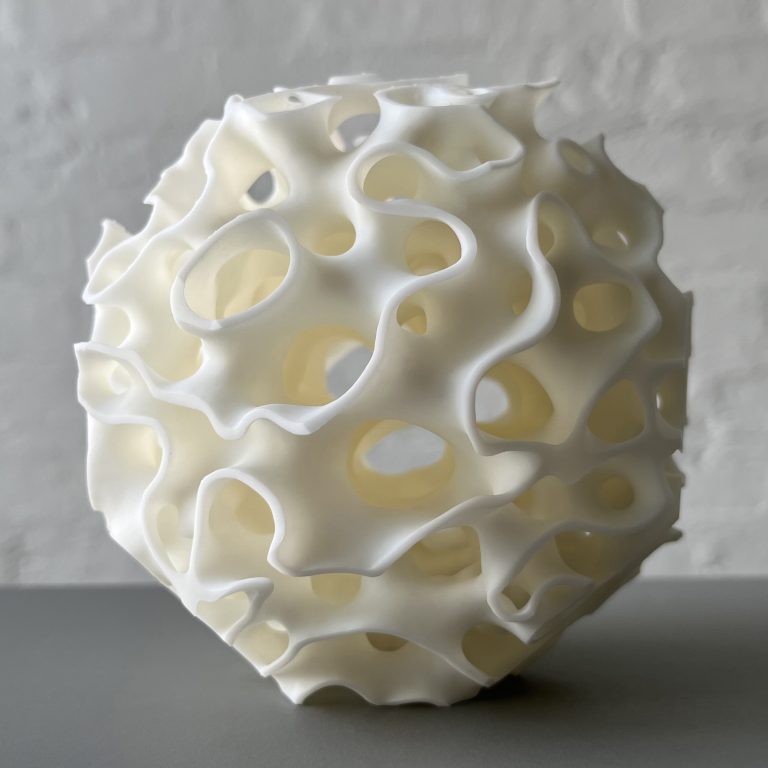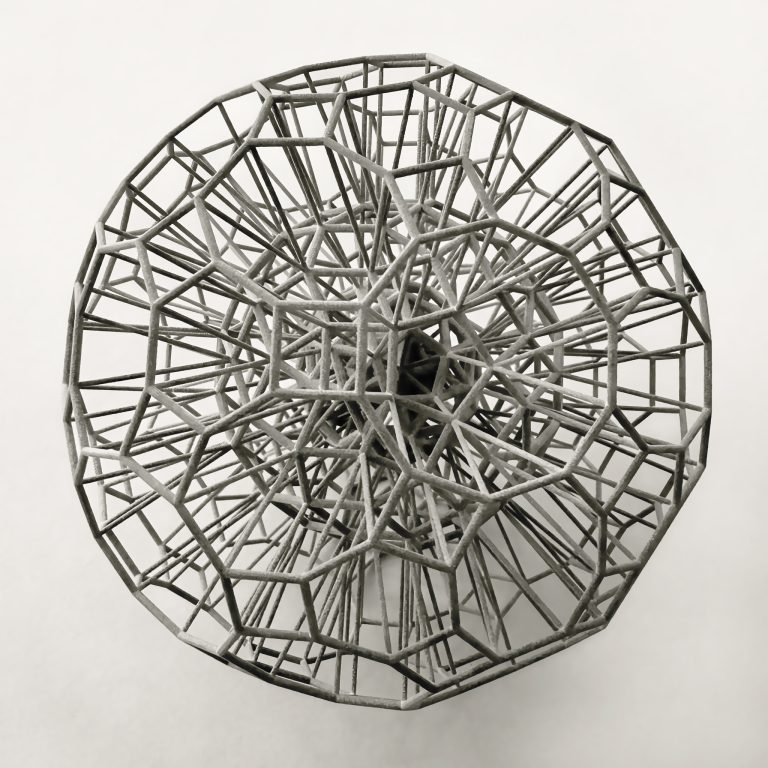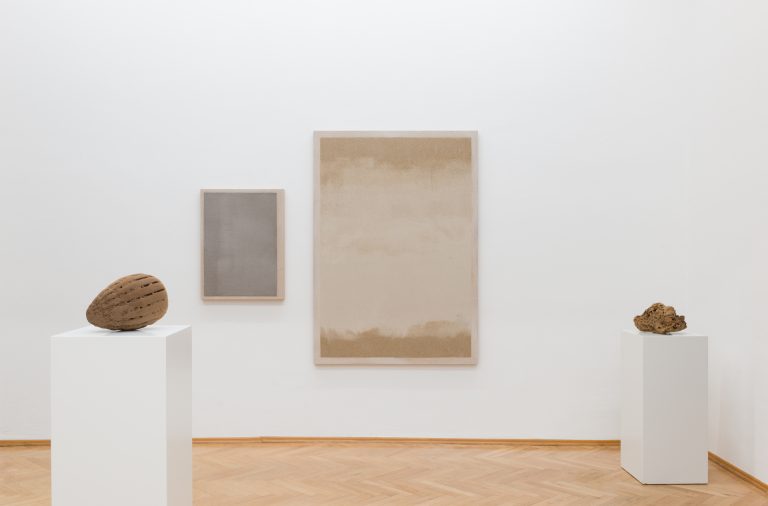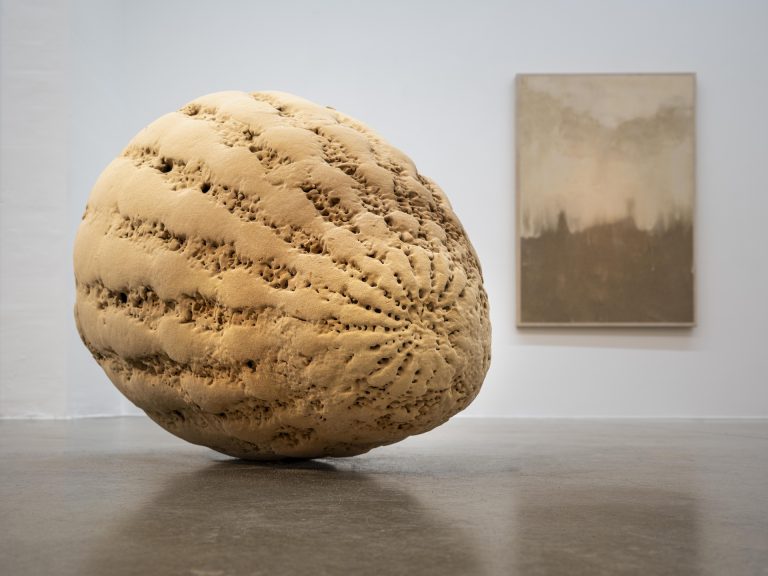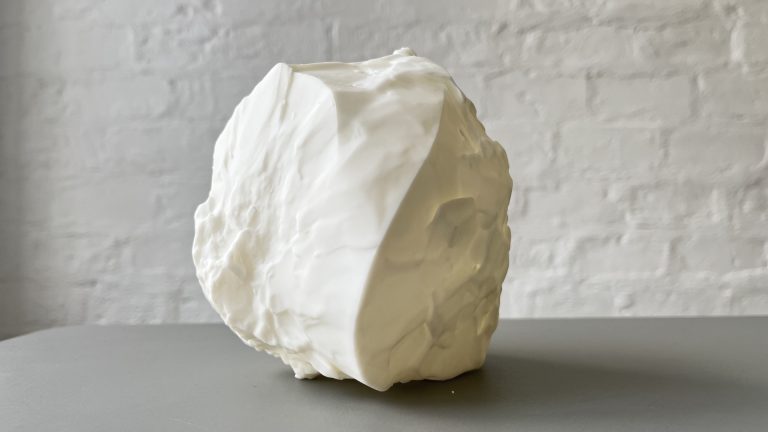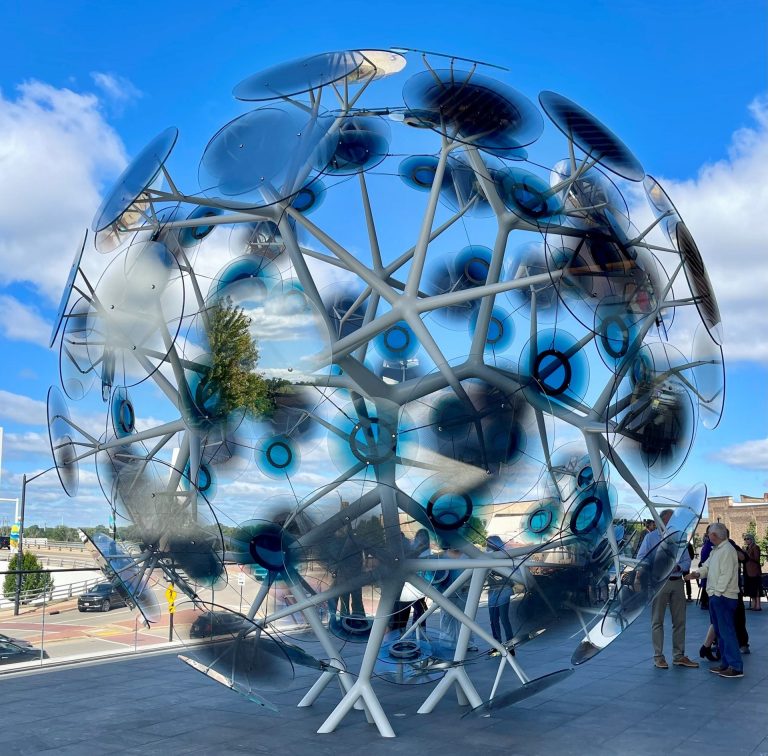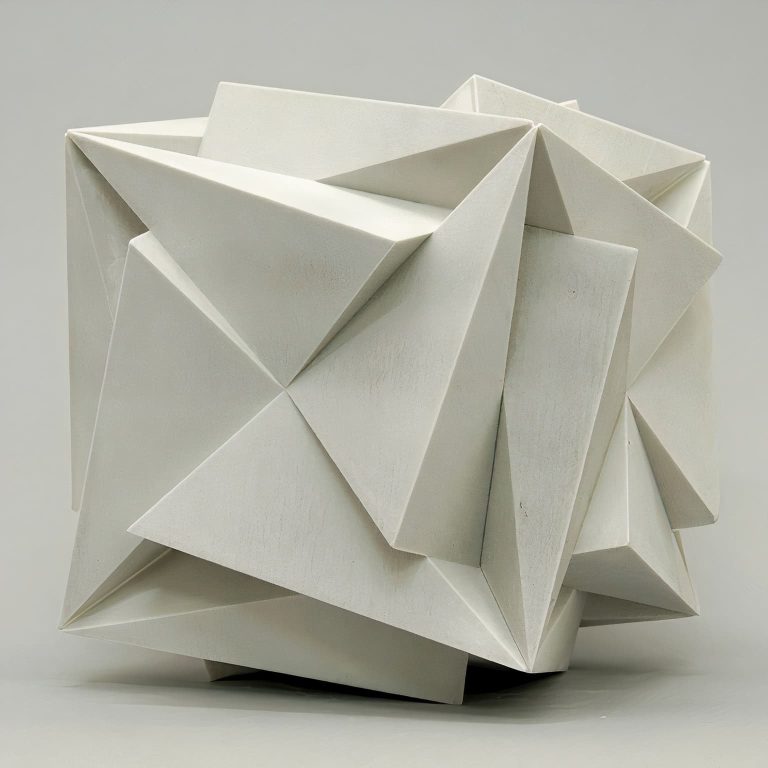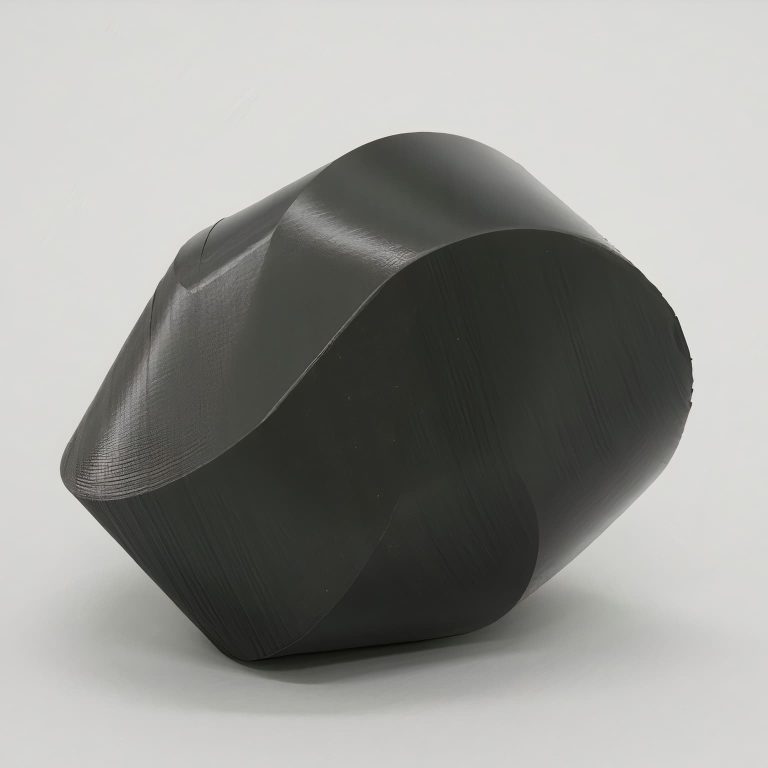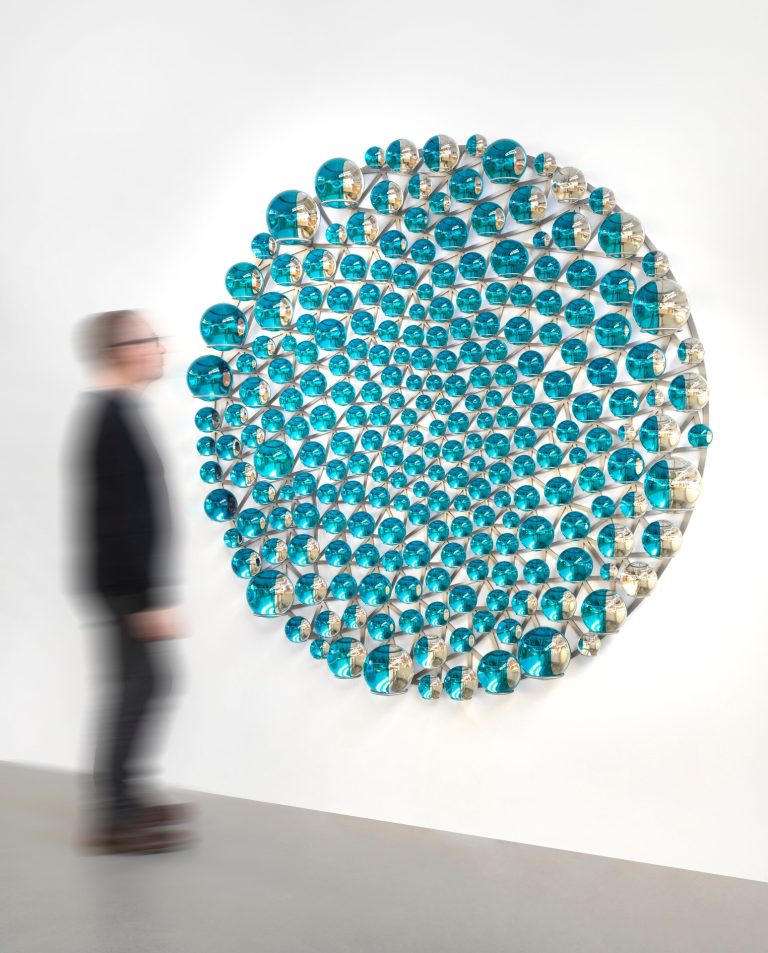
The Hopf Fibrations study explores three-dimensional visualizations of higher-dimensional topology. The research translates the Hopf fibration-a mapping from the 3-sphere to the 2-sphere-into geometric patterns comprehensible through physical models. The investigation examines how circles in four-dimensional space project into three dimensions as interlocking curves. Each fiber creates distinct geometric paths that link with other fibers, establishing complex spatial relationships. The study tests which visualization methods effectively communicate the fibration's structure and how projection techniques affect pattern clarity. The research addresses stereographic projection methods that transform higher-dimensional geometry into three-dimensional forms. Physical models demonstrate fiber linking patterns and the non-trivial topology underlying these mathematical structures, making abstract geometric concepts accessible through tangible form.


Photography: Phillip C. Reiner
